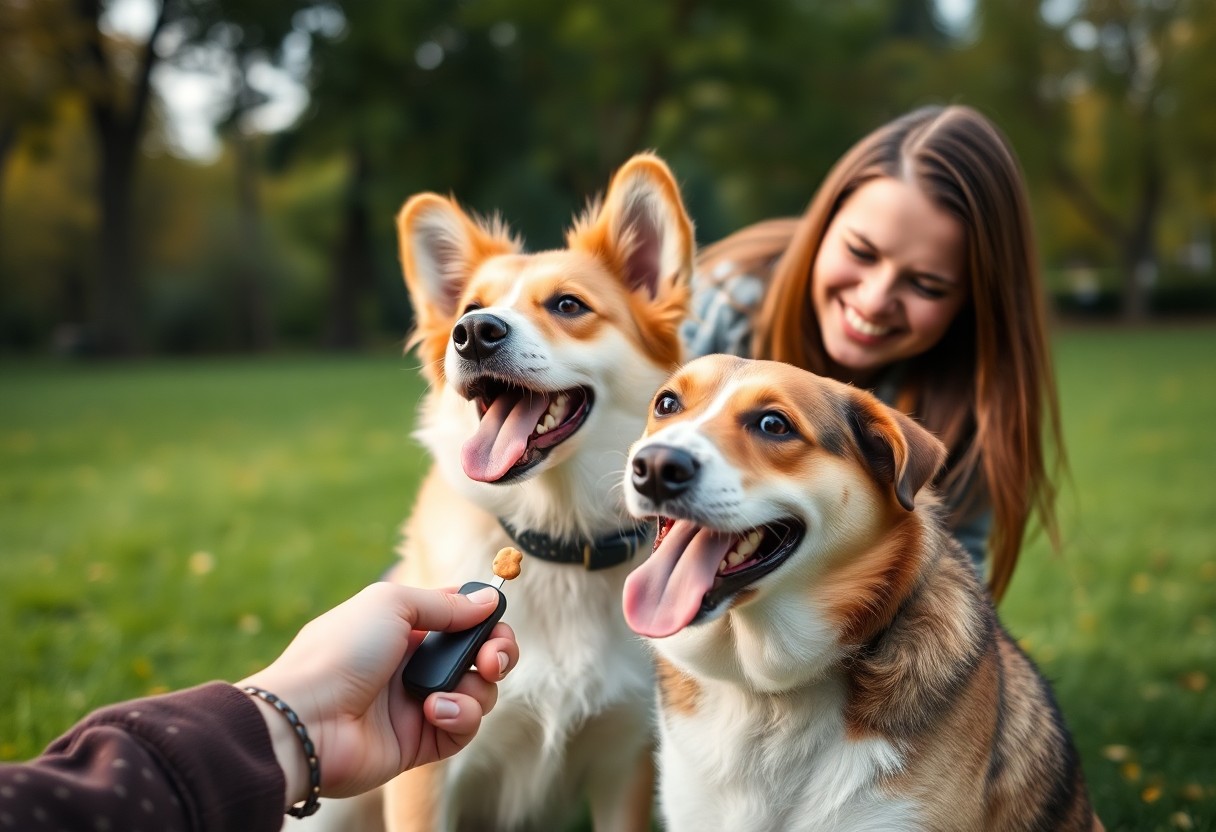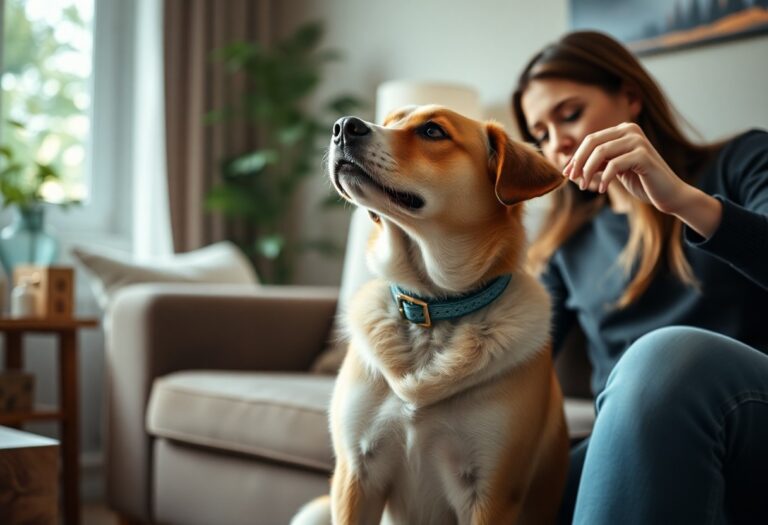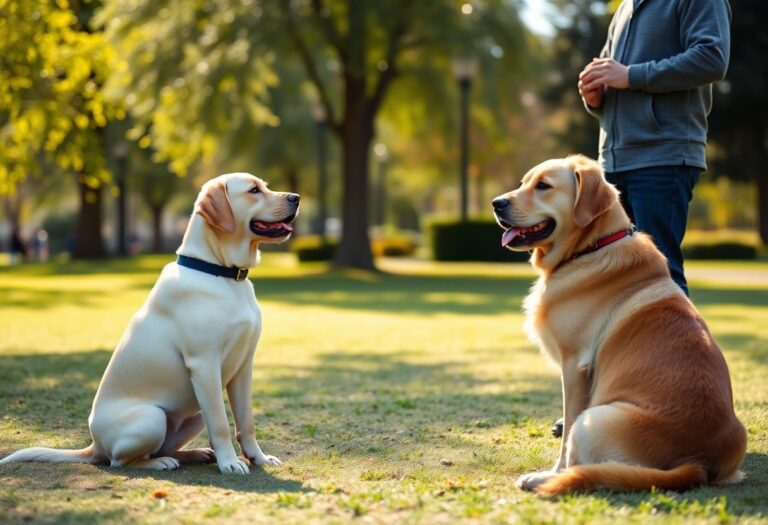Many new pet parents find themselves overwhelmed with training techniques, but clicker training stands out as an effective method for communicating with your furry friend. This positive reinforcement technique helps you teach your pet commands and desired behaviors through a simple clicking sound paired with rewards. By using a clicker, you can effectively mark the exact moment your pet performs the right action, making the training process clear and enjoyable for both you and your companion. In this post, you’ll learn the basic principles of clicker training and how to get started with your pet.
Unlocking the Power of Positive Reinforcement
The Psychology Behind Clicker Training
At its core, clicker training taps into the natural learning processes of animals. Dogs, cats, and even some non-traditional pets respond well to consistent and clear cues. The clicker acts as a marker, indicating to your pet that they have performed the desired behavior. This auditory signal is crucial because it bridges the gap between the action and the reward, allowing your pet to associate the sound with something positive, often a treat or praise. Being timely with the click ensures that your pet understands exactly what action earned them their reward.
The foundation of clicker training lies in understanding how animals learn. This method leverages the principles of *operant conditioning*, where behaviors are influenced by the consequences that follow them. By using the clicker in conjunction with rewards, you’re imperatively teaching your pet that certain actions lead to positive outcomes, effectively reinforcing good behavior over time.
Why Positive Reinforcement Works
Positive reinforcement shifts the focus from punishment to rewarding desirable behaviors. Engaging in this method fosters a trusting relationship between you and your pet; they learn that good things happen when they listen to you. For instance, studies show that animals trained with positive reinforcement are often quicker learners and exhibit reduced stress levels during training sessions. This happens because they feel secure in their environment, knowing they are being rewarded for their efforts, rather than fearing reprimand.
Additionally, positive reinforcement encourages your pet to repeat behaviors that have been rewarded in the past. Using clickers, you can create a system of rewards that is tailored to your pet’s motivations—be it treats, toys, or affection. This customization helps ensure that your training sessions are engaging and effective, allowing your pet to thrive in a supportive atmosphere.
When you practice this technique regularly, you’ll notice that even your most stubborn pets start to light up at the sound of the clicker. Over time, they will become more attentive during training sessions and eager to participate, setting a strong foundation for continued learning and deeper bonding experiences.
Essential Clicker Training Gear: What You Need
The Clicker: Choosing the Right One
Clickers come in various shapes and sizes, and selecting the ideal clicker for your pet is a fundamental step in the training process. Look for a clicker that feels comfortable in your hand and produces a sound that your pet can hear clearly. Some clickers are designed with a soft-touch push mechanism which reduces finger fatigue during longer training sessions. Alternatively, you might prefer a clicker with an adjustable sound that allows you to customize the volume to your pet’s sensitivity levels. Whichever style you choose, make sure it’s consistent and easy for you to use, as timing is necessary during training.
Many clickers also come with handy attachments, such as wrist straps or keychain hooks, ensuring they are easily accessible when you need them. A simple, lightweight clicker designed for your training sessions not only enhances your convenience but also keeps distractions to a minimum, allowing you to focus entirely on your pet’s progress. Training should be a positive experience for both you and your furry friend, and a reliable clicker can help pave the way for effective communication and learning.
Reward Options: Treats, Toys, and Beyond
The key to successful clicker training lies within the rewards you choose to offer your pet. Ideally, these rewards should be something your pet finds truly enticing. High-value treats, like tiny pieces of cooked chicken or cheese, are excellent choices for training sessions. They must be small enough to be consumed quickly, allowing your pet to stay engaged and focused. If your dog is toy-driven, squeaky toys, balls, or tug ropes can also work well as rewards, thus catering to their unique interests and preferences. Be sure to rotate options to avoid your pet becoming bored.
Providing a variety of rewards can not only keep training sessions fresh and exciting but also boost your pet’s motivation. You may also consider incorporating a mix of treats and toys depending on the complexity of the command you’re teaching. For instance, using a high-value treat for a challenging skill and a favorite toy for easier tasks can help reinforce learning in a positive and encouraging atmosphere. Recall, the right rewards will make the training process more enjoyable and effective for both you and your pet.
Mastering Basic Commands
Step-by-Step Guide to Teaching Sit and Stay
Teaching your pet the basic commands of “Sit” and “Stay” is foundational in their training journey. Here’s a simplified step-by-step guide using a clicker to reinforce these commands effectively:
| Step | Description |
|---|---|
| 1. Get Your Pet’s Attention | Begin by ensuring a quiet environment, free from distractions. Hold a treat in your hand and let your pet see it without giving it to them just yet. |
| 2. Command “Sit” | Raise the treat above your pet’s nose, then slowly move it back over their head. As they look to follow the treat, their bottom will naturally lower to the ground. |
| 3. Click and Reward | As soon as their bottom touches the ground, click the clicker and immediately give them the treat. This connects the action to a positive reward. |
| 4. Add “Stay” | Once your pet has mastered “Sit,” gradually introduce the command “Stay.” You can do this by taking a step back after asking them to sit, rewarding them for staying in position. |
Through repetition of these steps, your pet will begin to understand the commands. Keep training sessions short, ideally around 5 to 10 minutes, to maintain their interest and enthusiasm.
Building a Foundation: Reliability and Consistency
Reliability and consistency form the backbone of successful clicker training. Practicing commands regularly helps your pet solidify their understanding and expectation of what is required. Ensure that you use the same wording and gestures during each session; inconsistency can lead to confusion. For example, if you alternate between using “Sit” and “Down” for similar actions, your pet may struggle to learn the difference.
Space out training while integrating commands into everyday life. Ask your pet to “Sit” before meal times or during a walk. By consistently implementing commands in various scenarios, you reinforce their learning. Over time, this not only strengthens the bond between you and your pet but helps them gain confidence in responding to your cues in diverse settings.
Reliability also hinges on timing and clarity of the click. A well-timed click followed by a treat immediately following the desired behavior cements the connection and encourages repetition. Your pet will learn that good things happen when they respond correctly, making them more likely to perform for you in the future.
Common Pitfalls and How to Avoid Them
Miscommunication: Timing and Clarity in Training
Timing plays a vital role in effective clicker training. Your click must coincide precisely with the desired behavior; otherwise, your pet may become confused about what action earned the reward. For example, if you’re teaching your dog to sit but click after they’ve already stood back up, they may not make the connection between their sitting and the reward. Maintaining a consistent structure during training sessions can significantly enhance your communication. Always click the moment your pet performs the desired behavior and follow it swiftly with a treat, ensuring that your pet associates the click with the specific action. Using clear verbal cues alongside your click can further assist in solidifying the connection between the behavior and the reward.
Frustration and Fatigue: Keeping the Training Fun
The joy of learning can quickly turn into frustration when training sessions drag on, or your pet struggles to grasp a concept. If your pet shows signs of fatigue—evident through disinterest or even agitation—it’s wise to pause the session and give them a break. Short and engaging training sessions typically yield better results; aim for around 5 to 10 minutes to start. Break up the training by incorporating play or rest periods, leading to a more relaxed atmosphere that encourages productive learning. Keeping sessions upbeat and rewarding will not only benefit your pet’s mood but also strengthen your bond through positive experiences together.
Incorporating variety into your training regimen can help avoid fatigue as well. Mixing up activities, incorporating new tricks, or switching environments can keep your pet engaged and eager to learn. If your pet appears to be losing interest, you might try introducing a fun new command or game that captures their attention. Infusing these playful elements into your sessions fosters enthusiasm, transforming the experience from a chore into an enjoyable activity that both you and your pet can look forward to.
Progress Tracking: Measuring Your Pet’s Growth
Setting Realistic Goals for Your Training Journey
Establishing realistic goals for your training journey not only keeps you motivated but also ensures your pet’s success in learning new behaviors. Start by breaking down your ultimate objectives into smaller, manageable steps. For instance, if your aim is to teach your dog how to retrieve, begin with mastering simple commands like “sit” and “stay.” Setting specific timelines helps you monitor progress effectively—aim for a new command every two weeks, gradually increasing as your pet becomes more proficient. This incremental approach nurtures a sense of achievement for both you and your pet.
Consider your pet’s age, breed, and prior training experience to tailor your expectations accordingly. For example, a highly energetic Border Collie may require more frequent training sessions than a laid-back Bulldog. By understanding your pet’s unique disposition, you can create achievable goals that cater to their particular learning style, ensuring that both you and your furry friend stay engaged in the process.
Recognizing and Celebrating Milestones
As you and your pet progress through the training journey, recognizing and celebrating milestones is vital for maintaining motivation and reinforcing positive behavior. Each small success should be acknowledged—whether it’s your puppy’s first successful stay or your cat learning to come when called. Celebrating these moments helps build a strong bond and encourages your pet to keep striving for more.
Consider incorporating treats, praise, and even a special playtime session as rewards for reaching milestones. Keep a training journal to document these achievements, which allows you to visually track your pet’s progress and serve as a reminder of how far you’ve both come. Establishing routine celebrations gives your pet positive associations with learning, reinforcing their desire to participate actively in training sessions.
In addition to physical rewards, consider throwing a mini “graduation” party when your pet masters a significant skill. Invite friends and family to witness your pet’s accomplishments, creating a sense of shared pride and joy in your journey together. Such milestones are not just about the end results; they showcase both the effort you’ve put in and the bond you’ve strengthened with your companion along the way.
To wrap up
Conclusively, mastering the basics of clicker training can greatly enhance your relationship with your pet. By using a clicker as a communication tool, you provide clear and consistent feedback that helps your furry friend understand what behaviors you wish to encourage. As you practice, you will not only teach your pet new commands and tricks but also foster a bond built on trust and positive reinforcement. You may find that your pet becomes more engaged and eager to learn, making training sessions enjoyable for both of you.
As you launch on this clicker training journey, stay patient and celebrate the small victories along the way. Your commitment to learning and applying these techniques will pay off in the long run. By incorporating regular training sessions, patience, and love, you will contribute to a well-mannered pet that enriches your life. Enjoy the process, and you will discover the rewarding results of using clicker training effectively with your beloved companion.







